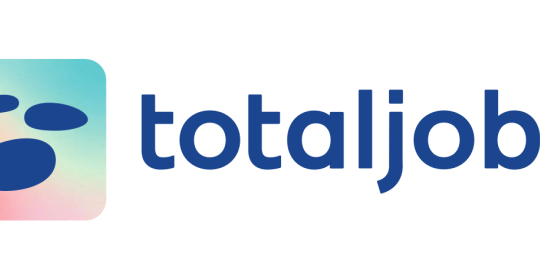Jobs were down 23% on March figures and applications dropped 22% month on month. Data from the Wave April 2023 Recruitment Trends Report indicates a slow-down in job activity, which could be attributed to ongoing economic pressures as well as office closures and holidays over Easter. We investigated further into the figures, plus looked at job board data and notable figures from specific industries to give you the low-down on recruitment and the jobs market in April.
Plummeting job activity
April was a slow month in the jobs market, with figures for both jobs and applications lower than they have been for the entirety of 2023 to date. At 13% over the 2022 monthly average, applications may be the lowest to date in 2023 but both December and November 2022 were lower. However, at 18% under the 2022 monthly average, job numbers haven’t been this low for well over 6 months. The Office for National Statistics Labour Market Overview for April noted that survey respondents “continue to cite economic pressures as a factor in holding back recruitment.” The long weekend for Easter and people taking leave over the school holidays may also be a factor in the decrease in both jobs and applications figures and there could be a link between a reduction in applications and the reduction in jobs (less jobs for candidates to apply for).
We may see business confidence rising
Businesses seem to be operating with caution still but we may be about to see that change. In a survey of 1,200 companies, the Lloyds Business Barometer for April found that business confidence is the strongest for nearly a year, with confidence in the economy rising. Hiring intentions are the strongest they’ve been since June 2022, with 47% planning on increasing staffing levels in the next 12 months. It could be that, as we enter a new financial year, businesses are making hiring plans that they will put in place in the months to come.
Health & Nursing jobs at record high, increasing shortages
For the first time since December 2021, IT & Internet has been knocked off the top spot for jobs posted. Health & Nursing, a regular in the top 5 for jobs, has further accelerated recruitment and posted 22% of all jobs - the highest percentage across all industries. The fact that it doesn’t appear in the top 5 for applications means that the skills shortage in the industry has further increased. Not only did it receive the lowest average number of applications per job in April, the number halved from March to just 2. A combination of high levels of burnout, staff shortages and a push for pay increases has led to the strikes we’ve seen over the past 6 months. In the meantime, fewer people want to enter the industry and workers are leaving, resulting in the chronic and worsening shortages we are witnessing.
The increase in Health & Nursing jobs (without an increase in applications) will likely not come as a surprise to anyone working in the industry. Analysis by the ONS, published by The Guardian, found that one in ten job vacancies posted online in December were in healthcare - more than any other industry. In fact, healthcare was the job category with the highest share of adverts in almost 90% of local authorities in the UK. The ONS said the increased share of healthcare adverts was part of a longer-term trend in demand. The sector’s share of online job adverts has been increasing consistently since 2017, even when factoring out the rise in relative demand for healthcare workers during the height of the pandemic.
IT & Internet remains highly active
IT & Internet is just behind Health & Nursing when it comes to jobs, posting 21% of all jobs. The industry also received the highest percentage of applications, indicating a continued healthy balance of supply and demand. IT & Internet and Health & Nursing together posted the lion’s share of jobs in April - nearly 50% of all jobs between them. This is a trend unlikely to change in the next few years. The World Economic Forum Future of Jobs Report 2023 cites technology adoption as a key driver of business transformation over the next five years. Over 85% of the organisations surveyed for the report highlighted “increased adoption of new and frontier technologies and broadening digital access” as the trends that will transform their business. The report also found that the fastest growing roles today are technology-related. It’s of vital importance that skills can keep up with the pace of development as this is what will help to strengthen the economy.
Financial services industries continue to receive a high average number of applications per job
The average application per job number across all industries was down to 13 in April, from 17 in March. And yet Banking achieved an average of 48 applications per job - a huge 13 more than the industry receiving the second highest. Finance also made it into the top 5. At 22 it received less than half the number that Banking did but it’s interesting that two financial services industries are again in the top 5 for average application per job figures (this is a trend that we see regularly in the Wave Recruitment Trends Reports.) Clearly the pull of a seemingly stable industry that might offer better job security continues to be important to candidates during ongoing turbulent times.
Niche job boards continue to outperform generalists on application numbers
The three job boards receiving the highest average number of applications per job are all niche, which is unchanged from March. IT-focused Jobserve received the highest number at 29, Hospitality and Catering-focused Caterer was second with 21 and Secretarial, PAs & Admin-focused Secs in the City were third with 18. Totaljobs received the highest of the generalist job boards, with an average of 17 applications per job, Reed.co.uk was second but with half that number at 8, and CV-Library were third with 7.
Wednesday is recruitment’s golden day
The most active day of the week in recruitment is Wednesday. In April, that is the day that most jobs were posted and the majority of applications were received. Posting jobs on the day that most candidates are actively searching is the sweet spot as the Wave Recruitment Trends for 2023 Report has found that the majority of applications are made within 24 hours (or 48 hours for longer listing durations) of a job being posted.
The monthly Wave Recruitment Trends Reports remain an important barometer of the status of the job market, how the recruitment industry is faring and job board performance. Job activity may have dropped in April but a number of reports and surveys by economists and forums are indicating that business confidence is rising and the Wave team is keeping a firm eye on that - the next few months could be an interesting time in recruitment.







